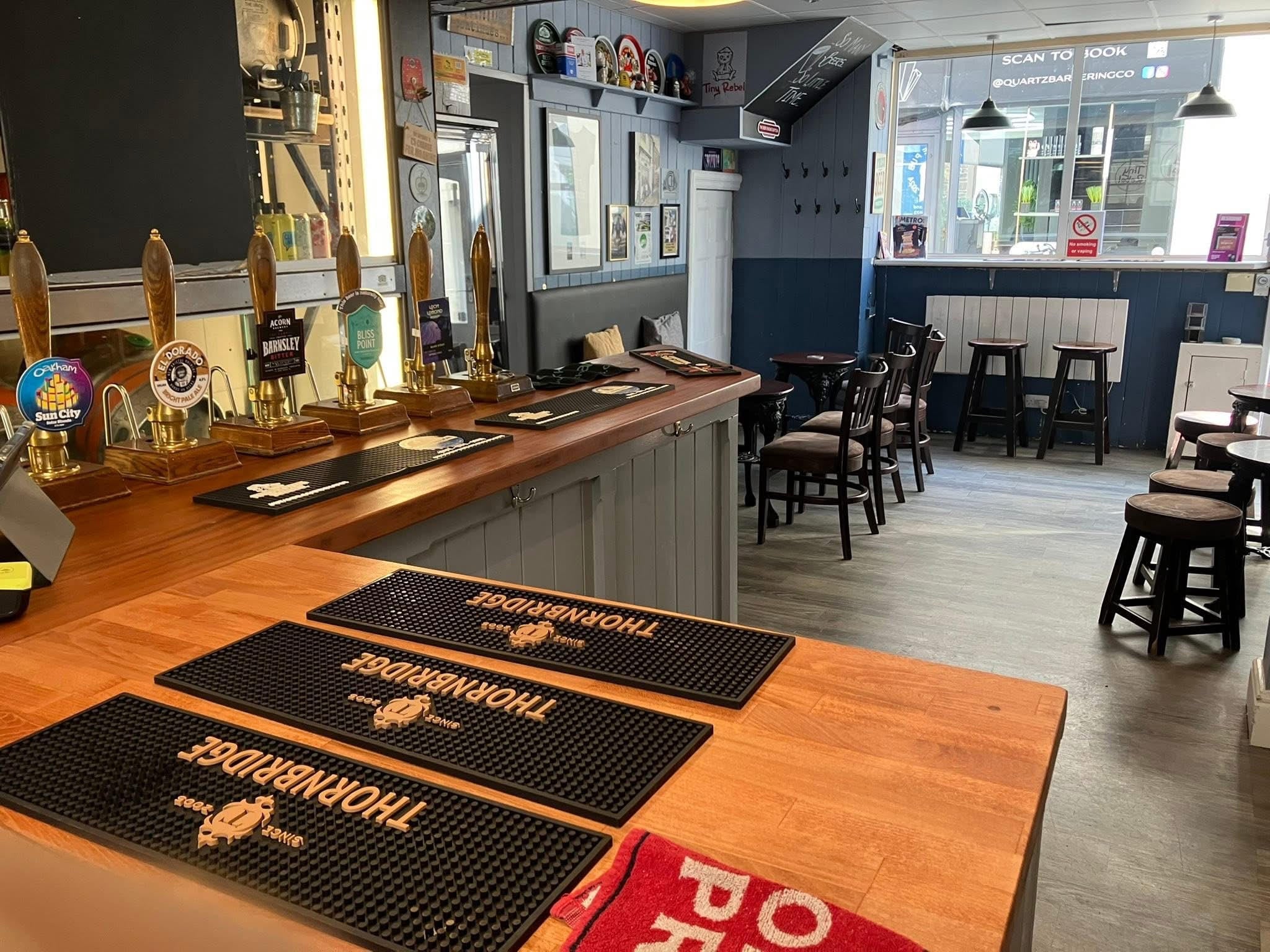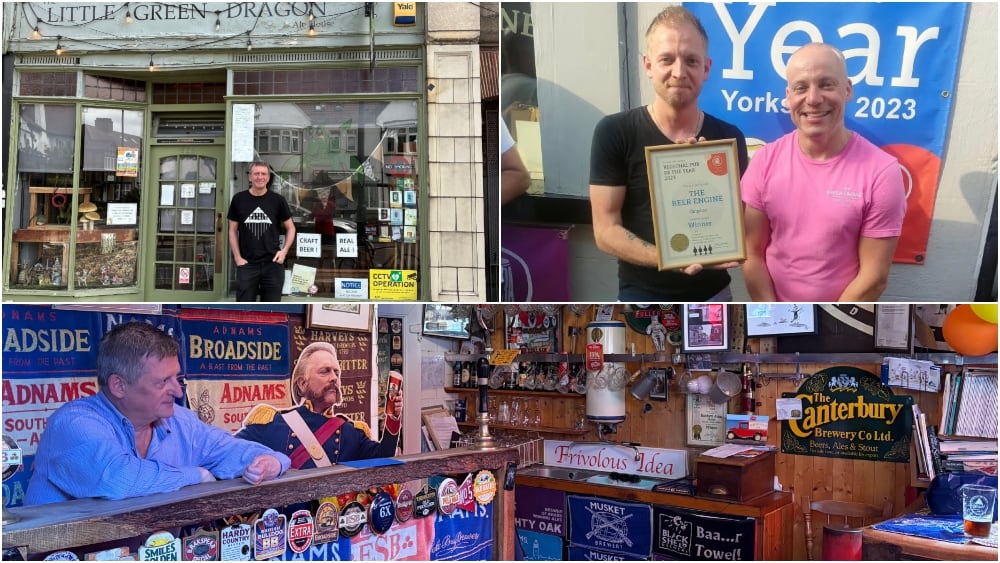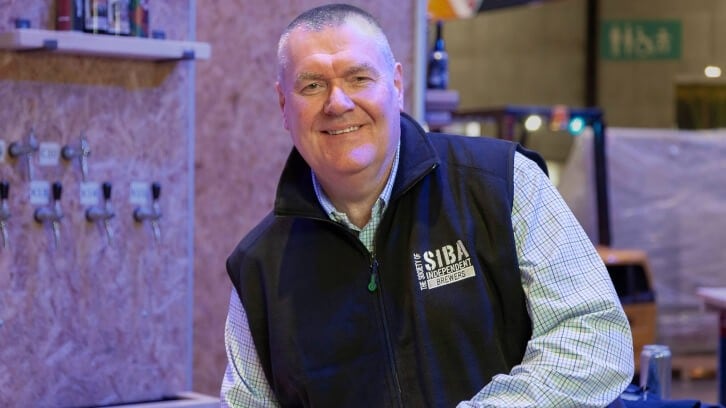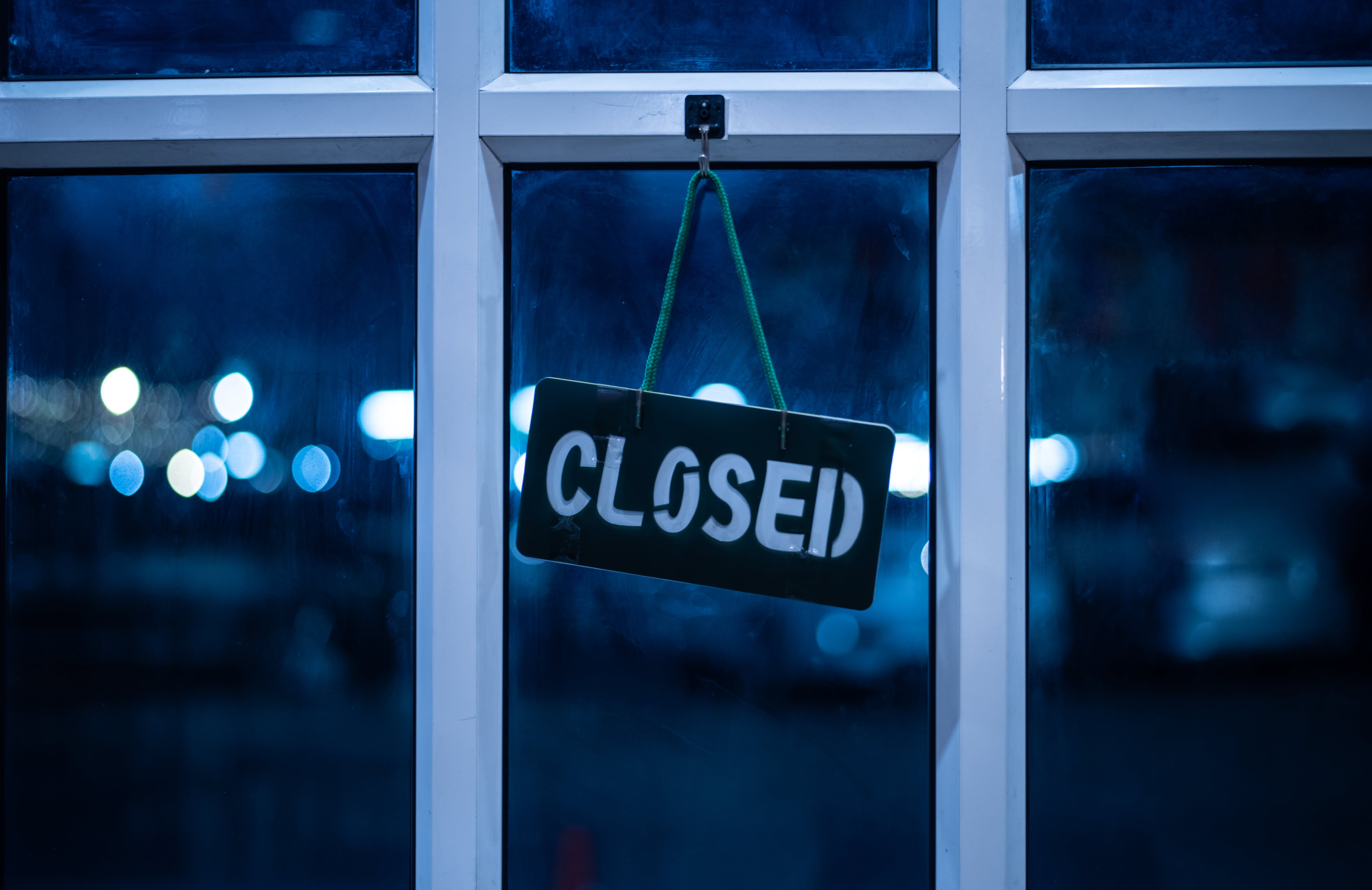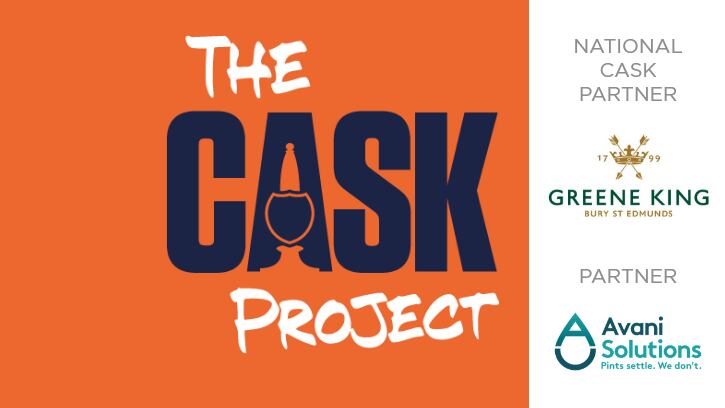“I thought we’d have none of those things, just cask beer. Everyone told me that 90% of people would be alienated by this but I thought ‘that’s no problem’ because I only wanted the other 10% and the pub would be 10% the size of a normal pub,” he recalls.
Thus, the bullish Hillier arguably set off a revolution in creating the Butchers Arms in Herne, Kent, in a former butcher’s shop that became the first micropub when it opened its doors on 24 November 2005. As the pub approaches its 20th anniversary, it has been joined by almost 1,000 other tiny pubs, according to the Pubs Galore website.
The local pub was just desperate and was selling lager to kids and was a nuisance.
Martyn Hillier, Butchers Arms
Certainly, much has happened since Hillier was running an off-licence in the back of the property while his wife ran a florist shop in the front. Their marital split coincided with the local licensing officer informing him that he could turn his beer shop into a pub because the law had just been changed.
The new rules made it more difficult for objections from local competitors to be made against new licence applications. The only grounds for rejection were: health and safety issues; a criminal record of the licensee; law and order issues; and it being detrimental to children.
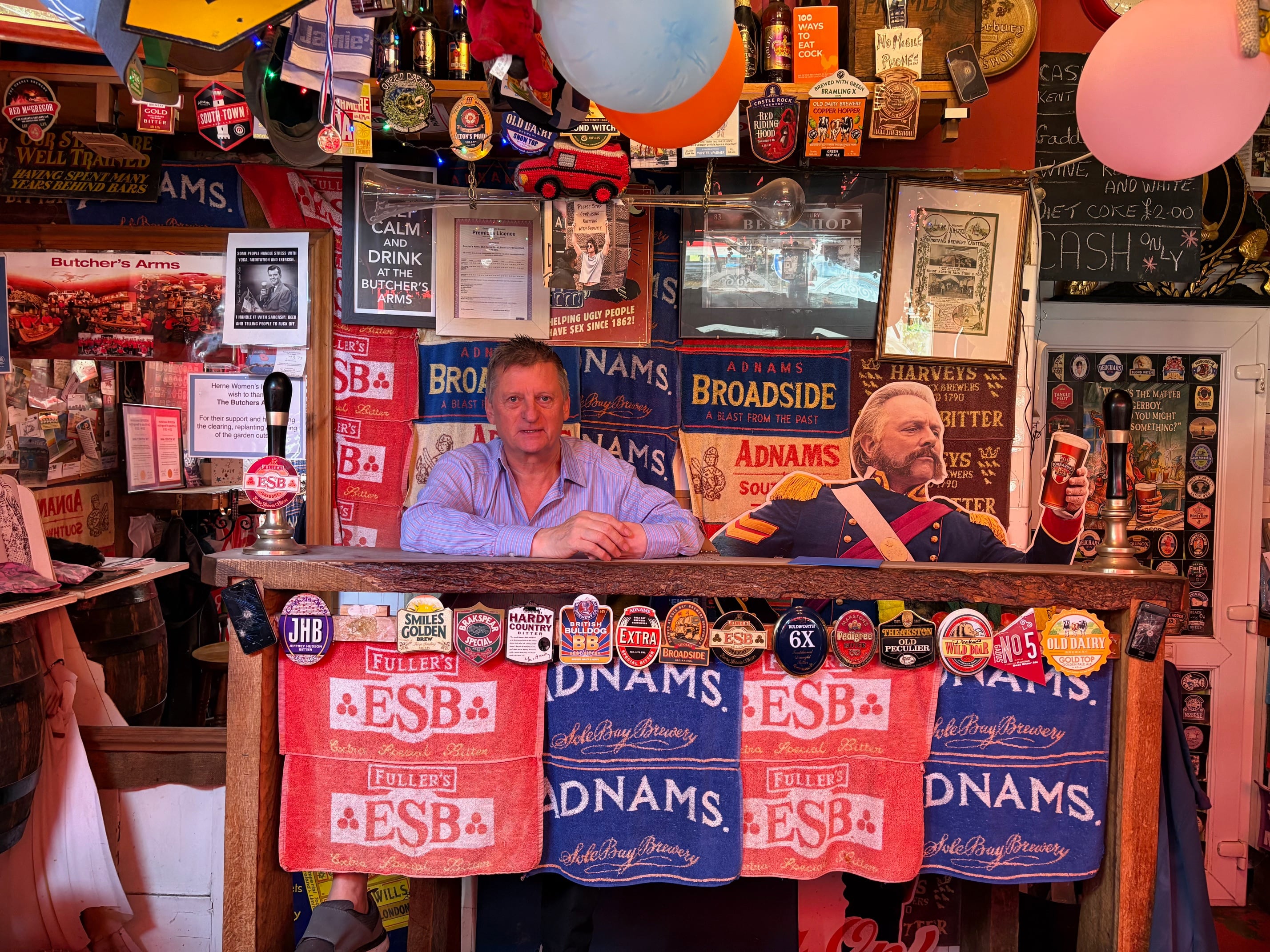
Replacing the florists with the pub gave him a trading space of a mere three metres by four metres and a comfortable capacity of 20, although he has squeezed in 37 and two dogs on one record-breaking occasion.
Despite his friends’ reservations, Hiller says: “It was no surprise it went well because people told me it was the best beer in the Canterbury area.”
He was helped by the nearby competition being poor. “The local pub was just desperate and was selling lager to kids and was a nuisance,” he says.
Previously, you’d have needed thousands or even millions of pounds for a freehold or be a tied tenant.
Richard Reeve, Little Green Dragon
The layout was another key factor behind the Butchers Arms’ success because there is no bar and customers face each other across the cosy room so conversation invariably flows among drinkers.
People expect to see the owner
What he had effectively created was a proposition akin to the beer houses that proliferated in the 1850s when the licensing regime was relaxed on beer supply as a route to weaning people off the demon gin.
Such was the appetite for the beer and good vibes combo at the Butchers Arms that his customers wanted him to open other similar site elsewhere but he was against the idea because he always believed the beauty of the model is the ever-present landlord. “I am the pub. If I’m not here then the heart is taken out of the place. People expect to see me,” he says.
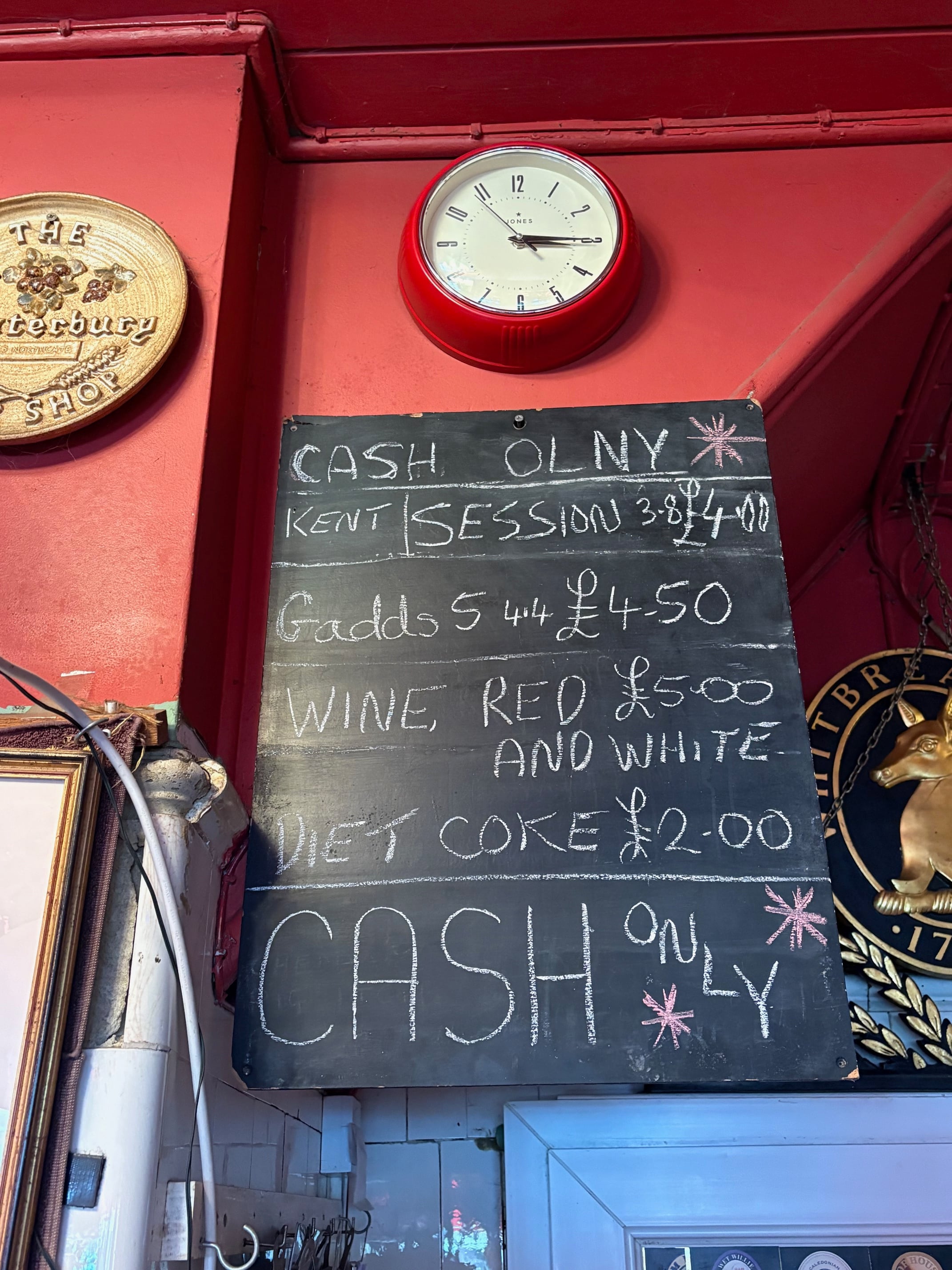
Opening hours are an interesting factor of micropubs because one of the advantages of running them is the flexibility they afford owners and their ability to focus on just opening at the peak times and thereby maximising labour.
“The big boys will stay open until 11.30pm and lose money,” he suggests. “I don’t open all day on Sunday because people do not drink more [volume of] beer during longer hours. With fewer hours, their drinking is concentrated and they also get to meet everybody [during that shorter session].”
Eschewing the opening of further units himself, he instead promoted the idea of micropubs at the Campaign for Real Ale’s (CAMRA) AGM in 2009 in the hope some members would follow him and open their own places.
It used to be an older man’s pub but now we’ve more ladies and we want to appeal to a wider market by also bringing in younger customers including young professionals and it is working.
Adam Davies, the Beer Engine
Six of his own customers have gone on to set up shop but he says the revolution had a surprisingly slow start. When I interviewed Hillier in 2012, there were only 11 operating including the second micropub – the Rat Race Ale House in Hartlepool, County Durham.
However, in 2015, CAMRA gave Hillier its Campaigner of the Year award with a front page story in its monthly publication What’s Brewing and then he says “it took off”.
Ahead of this major take-off, Richard Reeve, owner of the Little Green Dragon in Enfield, Greater London, says he “fell in love” with the concept of the micropub after a friend told him about the Harbour Arms in Margate, Kent, and he decided to cycle 2,200 miles around the UK to visit all 100 members of the Micropub Association at that time. This was the inspiration for him to open a micropub himself.
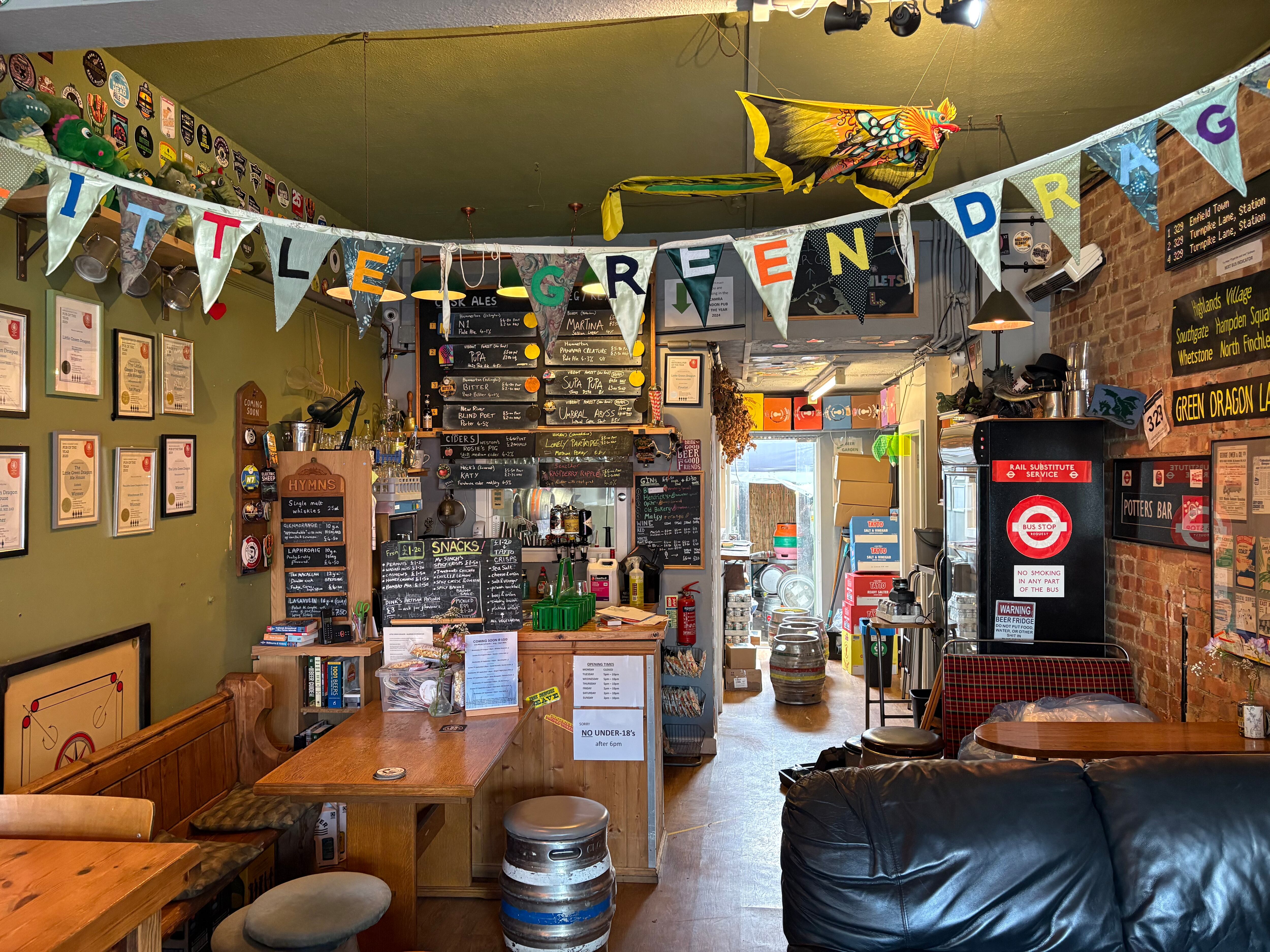
“I wanted to get out of IT and, meeting micropub owners on my bike ride, I realised they’d mostly never run pubs before. They were just beer enthusiasts. Martyn’s great idea was to let the ordinary person set up a pub. Previously, you’d have needed thousands or even millions of pounds for a freehold or be a tied tenant,” he explains.
He opened the Little Green Dragon in a former hairdressers with a total budget of £30,000, fitting the place out with eBay-sourced items and second-hand cellar kit.
He cites other micropubs outside London that have been able to open with budgets of a mere £5,000. He adopted much of the Hillier micropub model, including being present for most of pub’s opening hours even though he has help from three part-timers.
By not focusing on Bacardi Breezers and food, we probably sell more cask than any other Enfield pub.
Richard Reeve, Little Green Dragon
“It’s important the owner is mostly there in order to avoid having a corporate feel. And it’s also important to do cask ale, which should be at the forefront of micropubs. It’s a USP because at many traditional pubs, it’s now sub-standard and not looked after. By not focusing on Bacardi Breezers and food, we probably sell more cask than any other Enfield pub even though I’ve got the lowest sales in Enfield,” suggests Reeve.
Over time, he has flexed the micropub model beyond Hillier’s original template, which has included broadening the mix of drinks on offer so that it now comprises four cask, four keg and four ciders. “Most micropubs were just about cask [in the early days] but the majority now also have keg – but they are interesting keg beers,” he says.
Highlighting how the micropub can evolve even further is the Beer Engine in Skipton, North Yorkshire, that had originally been a single-room pub replacing a wedding dress shop. When it was bought by new owners during Covid-19, they took the opportunity to take over the unit next door and knock through to create a larger premises. It is still a micropub at heart though, with no food, no spirits and the owners being very much present during opening hours.
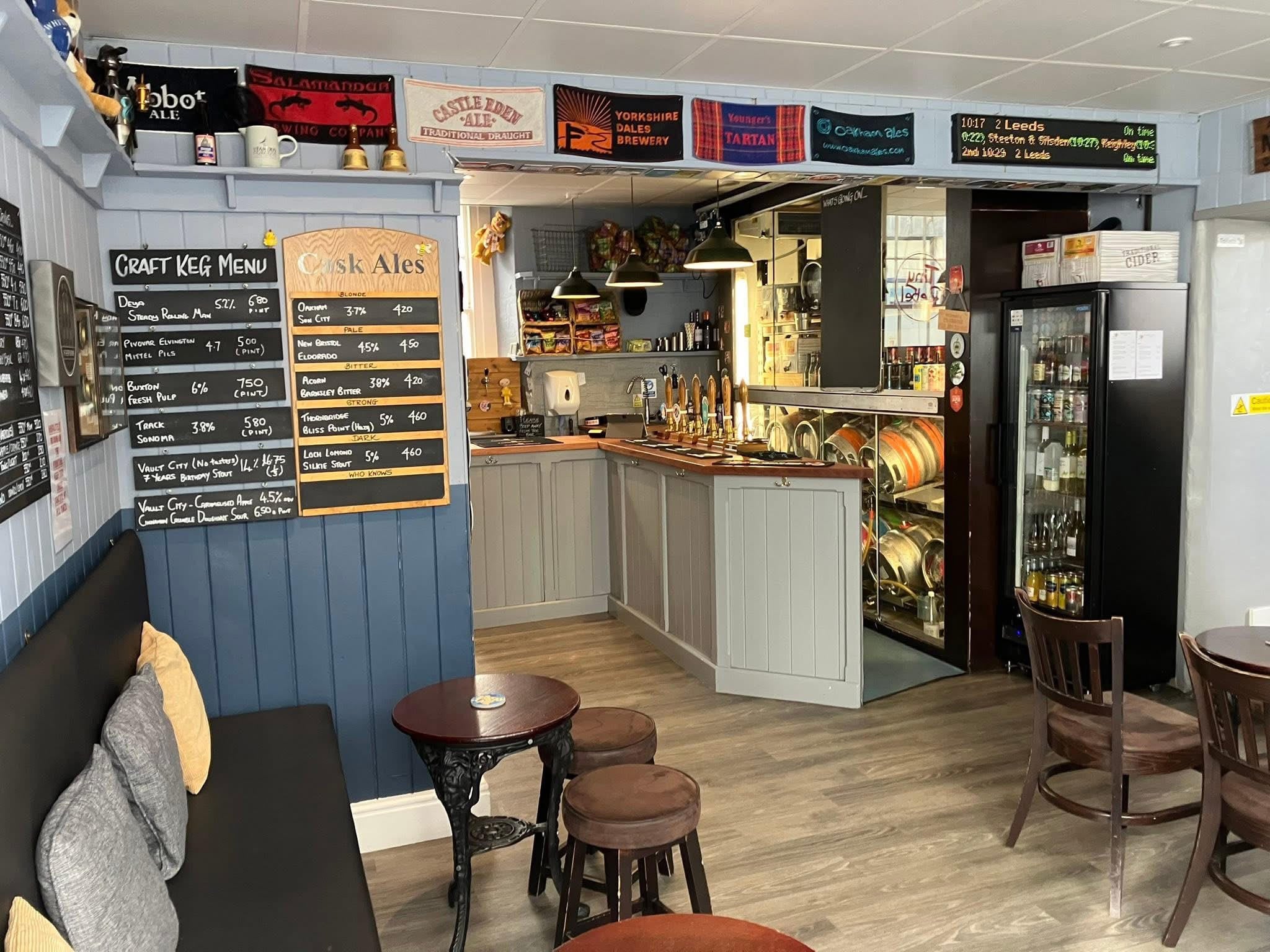
The cask beers are also a primary focus. Adam Davies, co-owner of the Beer Engine, says: “At 7am [co-owner] Steve will be racking the ales. You’ve got to be interested in the beer and to be drinking it so you can tell the quality. We both like ale and put on what we would like to see in a pub.”
However, where things have changed is with the larger premises that Davies says has made it more inclusive and more comfortable to women from when it was a one-room pub.
The addition of eight wines and six keg beers has also helped boost its appeal. “It used to be an older man’s pub but now we’ve more ladies and we want to appeal to a wider market by also bringing in younger customers including young professionals and it is working,” he says, adding that the pub is up for CAMRA National Pub of the Year award for the third time. It sits alongside two other micropubs on the shortlist for 2025 – the Station House in Durham and the Royston in Broadstairs, Kent.
I’m cautiously optimistic that this grassroots movement has preserved the heart and soul of the pub.
Richard Reeve, Little Green Dragon
Such awards very much validate the appeal of the micropub that is proving to be an increasingly bright spot in the sector – that continues to suffer from traditional pub closures – and is also more broadly helping to rejuvenate high streets around the UK.
Crowdfunding campaign considered
In recent weeks, Broxtowe Borough Council in Nottinghamshire has approved plans for part of a former HSBC bank – which are being closed en-masse across the country – to be converted into a micropub that will represent the sixth such venue in the nearby area.
Hillier points to the high street in Colne, Lancashire, which had its share of empty shops but now has three micropubs located right next to each other – Boyce’s Barrel, Cask ’n’ Keg and Mojo’s of Colne. “Run-down areas are being regenerated because it’s not difficult to get a change of use on the properties and a licence,” he says.
There is also an argument that micropubs can be supported in areas where a traditional-sized pub no longer attracts enough custom, such as in remote villages. Even in urban Enfield, there is something of a correlation with this because Reeve called his micropub the Little Green Dragon to reflect the closure around the corner of the sizeable Green Dragon pub that was developed into flats and a Waitrose supermarket. He now attracts some of the former customers from this traditional pub.
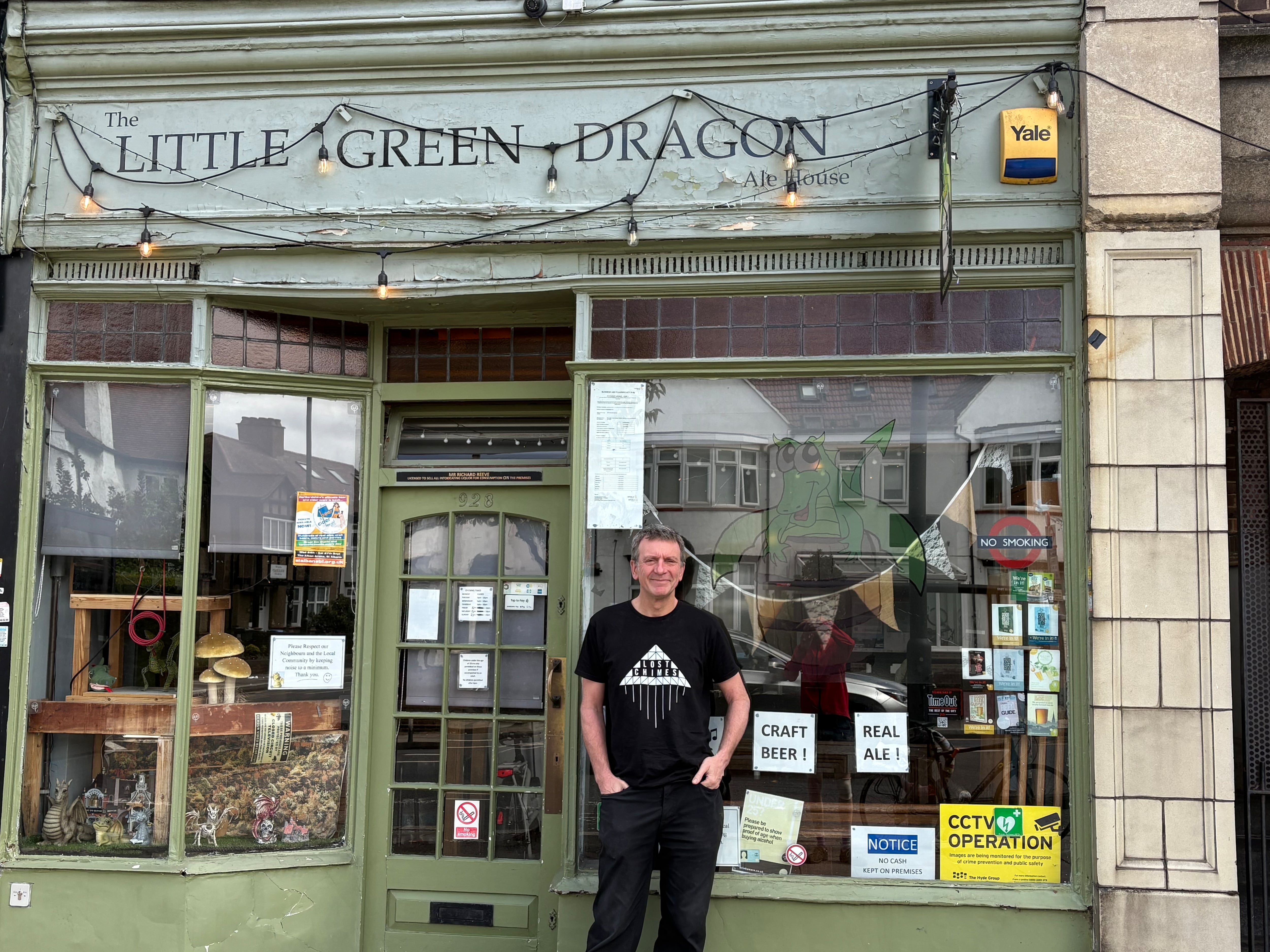
Reeve suggests the micropub revolution has revealed there is still demand – although he acknowledges it could be niche – for wet-led pubs with well-kept beers when it has become accepted wisdom that this model no longer works. But as the Butchers Arms and the other early micropubs come up for significant anniversaries, some of their owners are considering retiring and seeking new management for their pubs as is the case at the Beer Engine.
Hillier himself is considering launching a crowdfunding campaign to buy the Butchers Arms property, which has been on the market for a year, and to place it in a charitable trust while he continues to operate the micropub component on a leasehold basis.
Overall, there remains great positivity around the micropub concept as its 20th anniversary approaches. Reeve suggests: “I’m cautiously optimistic that this grassroots movement has preserved the heart and soul of the pub, and as the early crop of micropub owners come up for retirement, that their pubs will still be around in the future.”
And as for potential newcomers joining the growing army of micropub owners, Hillier remains characteristically positive, suggesting: “It’s still a largely untouched market so don’t think about it, just do it.”
